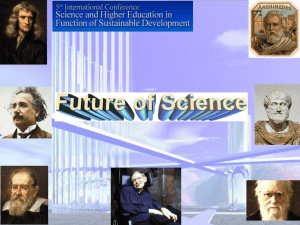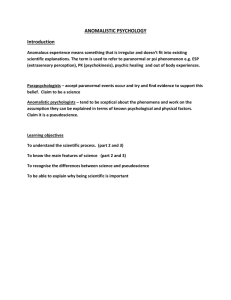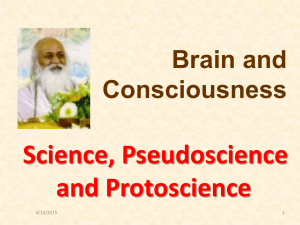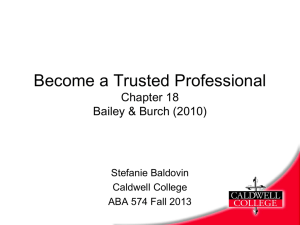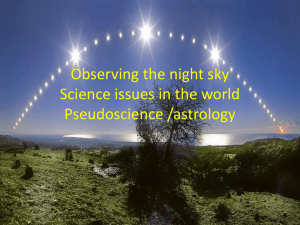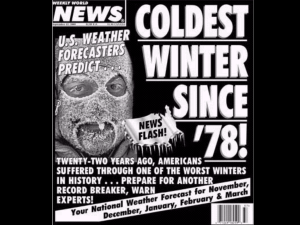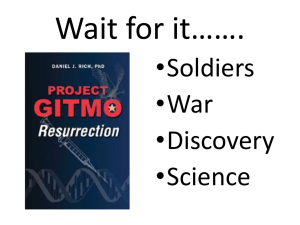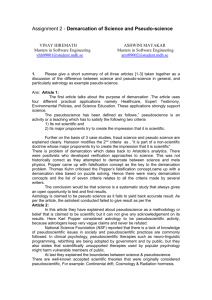Investigating UFOs
advertisement
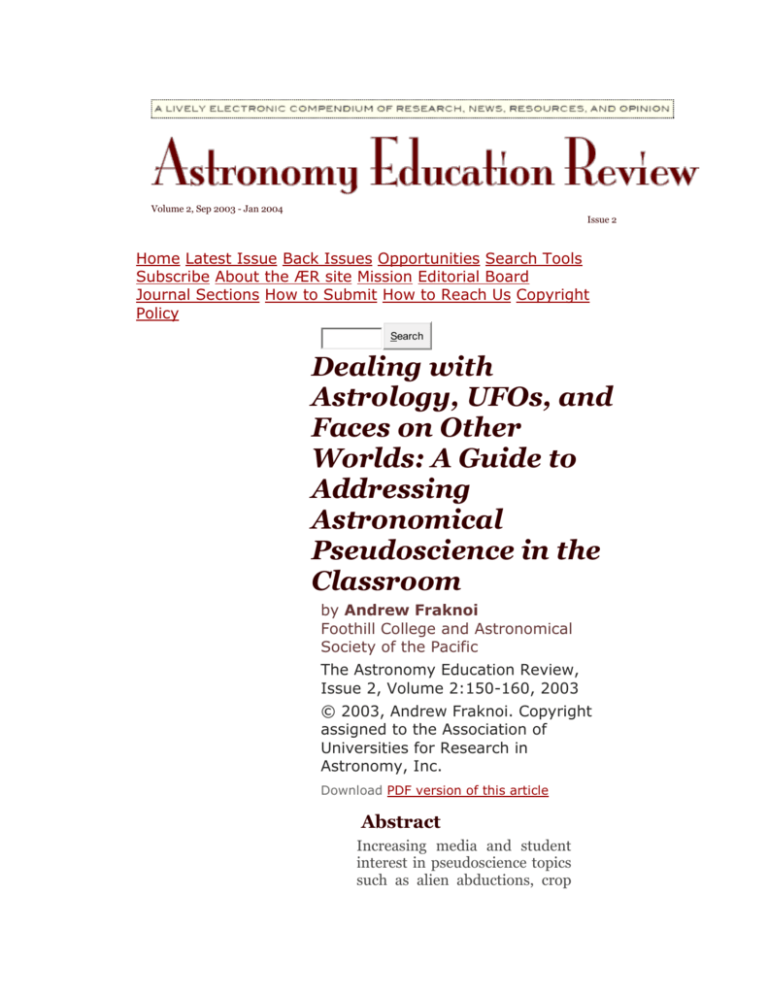
Volume 2, Sep 2003 - Jan 2004 Issue 2 Home Latest Issue Back Issues Opportunities Search Tools Subscribe About the ÆR site Mission Editorial Board Journal Sections How to Submit How to Reach Us Copyright Policy Search Dealing with Astrology, UFOs, and Faces on Other Worlds: A Guide to Addressing Astronomical Pseudoscience in the Classroom by Andrew Fraknoi Foothill College and Astronomical Society of the Pacific The Astronomy Education Review, Issue 2, Volume 2:150-160, 2003 © 2003, Andrew Fraknoi. Copyright assigned to the Association of Universities for Research in Astronomy, Inc. Download PDF version of this article Abstract Increasing media and student interest in pseudoscience topics such as alien abductions, crop circles, and creationism is forcing astronomy instructors to confront questions for which their graduate training has not prepared them. Yet students have a right to hear a more considered response to their questions in these areas than mere scoffing from those who teach them science. To assist instructors who want to help their students develop better critical thinking skills related to astronomical pseudoscience, a range of ideas and resources is listed in this guide. "Arguing with someone who uses language in this blousy manner is like dancing with smoke."—James Gleick, reviewing John Mack's book Abduction in The New Republic, 24 May 1994. 1. MEDIA OR PUBLIC INTEREST: THE CHICKEN OR THE EGG Although there has long been public interest in the paranormal, polls in the last few decades are revealing alarming levels of belief among U.S. students and the public. In a 1984 Gallup Poll of teenagers, 55 percent professed a belief in the tenets of astrology (Frazier 1984–1985). Among adults, a June 1990 Gallup poll showed that 25 percent believed in astrology, with another 22 percent not sure. In the same survey, 27 percent were sure that extraterrestrial beings have visited the Earth (Gallup & Newport 1991). A 1993 Gallup poll indicated that almost half of Americans believe that human beings were created just 10,000 years or so ago without the involvement of any evolutionary processes. In 1997, a Yankelovich Partners poll showed that belief levels in astrology among adults had risen to 37 percent (Nisbet 1997). During this same period, there has been a tremendous increase in media attention being paid to pseudoscience. I think it is fair to say that today there is a large-scale and very profitable media onslaught to exploit and fan the flames of pseudoscientific belief. Although significant media interest in the past was limited to tabloids like the National Enquirer, today even the mainstream media peddle the paranormal shamelessly, finding it profitable and entertaining (and, sadly, finding no government regulation or state "truth-in-lending"type rules barring their way). Perhaps most pervasive in their influence are the television and cable networks, where long traditions of journalistic news integrity have in recent years been scuttled in favor of a giddy mixture of celebrity journalism and unverified pseudoscience. Bear in mind that the average American youngster spends about 900 hours a year in school and anywhere between 1,200 and 1,800 hours in front of a television set (Barber 1993). Small wonder that our culture has learned to hold visual entertainment in higher regard than truth or evidence. Quickly catching up with television in its effects on public perceptions of pseudoscience is the World Wide Web, the world's largest library without the benefit of librarians. The Web today is what our universities would be like if any student or community member were allowed to teach a course at any time alongside those who have spent their lives studying their academic fields. If you can think of some kind of sciencerelated nonsense, there is already likely to be a host of Web sites devoted to it. Future historians can debate which came first, the onslaught of media attention or the upswing in public interest. For the educator, they have gone hand in hand, and the net result has been a much greater belief and interest in pseudoscientific claims among students entering high school and college astronomy courses. Add to this the reluctance or lack of interest among teachers in stressing skeptical or critical thinking in the K–12 schools, and it may not be surprising that many students come to college either believing in pseudoscientific claims or disturbingly open-minded about the possibilities. 2. HOW SHOULD INSTRUCTORS RESPOND? The typical instructor of introductory astronomy has several degrees in some area of science. But never in the long years of undergraduate and graduate science training was such an instructor provided much information about astrology, UFOs, creationism, ancient astronauts, faked Moon-landing claims, and so on. He or she is thus poorly equipped to respond to a group of students who may think that horoscopes will be as much a part of the introductory course as telescopes. Yet many of our students, seeking a connection between pseudoscience and real science, may look to us for guidance on how to view claims of the paranormal. Often, instructors (perhaps modeling the behavior of their mentors in graduate school) will try to steer student discussion away from pseudoscience with a quick joke, a dismissive remark, or a stern admonition that the question is inappropriate for the course. Other instructors may simply not have thought much about such topics until they begin teaching the introductory course, and they may be reluctant to discuss an area that is not among their fields of expertise. Students, used to the free and easy discussion of these topics in the media (and frequently aware of conspiracy theories peddled by "true believers" that invest scientists with roles in vast cover-ups), can easily get the impression from such responses that astronomy instructors are unwilling to confront such beliefs or have something to hide. The good news is that, in the last few decades, astronomers, educators, librarians, and other skeptics have developed a rich array of materials to help instructors (and their students) learn more about these fringe topics and how to respond to them. As we discuss below, some of these materials can also help instructors put the student interest in pseudoscience to positive use. A list of key pseudoscience claims related to astronomy and to Web sites that deal skeptically with them are given in Appendix 1. A fuller listing of written and Web resources can be found at: http://www.astrosociety.org/educatio n/resources/pseudobib.html. This is an expanded version of listings that have been published by the Astronomical Society of the Pacific's Mercury magazine and Web site for more than two decades (e.g., Fraknoi 1978, 1984). It is my hope that such resource guides can serve instructors in some small measure as selfdefense manuals for astronomical pseudoscience. At the very least, I hope they will enable instructors to learn about the key issues and responses more quickly and efficiently. However, I think that there is more that we can do in this area than simply point out the fact that astrology has now flunked dozens of scientific tests, that Jimmy Carter's UFO turned out to be the planet Venus, or that what crashed at Roswell, New Mexico, was a then top-secret balloon experiment trying to develop an early warning system about Russian nuclear tests. Clear explanations of how scientists or statisticians deal with claims about astrology and UFOs as alien spaceships can also give our students insights into how science really works—how to frame hypotheses, how to gather evidence and do experiments, how to make judgments about the statistical validity of those experiments, and how ultimately to decide what to believe about how the world works. Even better, we can encourage students to develop their own investigations into or experiments to test some of the claims they have heard about. Scientists do this regularly when confronted with new data or new ideas, but in our courses, we so often focus on knowledge instead of process that students may be less aware of the scientific method than we would like. You will undoubtedly hear colleagues say that including discussions or tests of pseudoscience in introductory astronomy classes demeans the other parts of the course, or undermines the dignity of being a professor. Certainly, we would all be more comfortable if these issues would go away and our students came to class with no notions of alien abductions, faces on Mars, or ancient astronauts. But the proverbial genie cannot be put back in the bottle simply because we wish it—far better to use such interest for constructive purposes. 3. SKEPTICAL CLASSROOM ACTIVITIES Let me briefly sketch some of the ways that a number of us have been dealing with pseudoscience in a classroom, section meeting, or laboratory. Certainly, the most common way is simply to talk about the truth behind the fantastic claims, giving not just abstract ideas but specific examples that students may have heard and wondered about. When discussing the Martian surface, for example, why not include a slide of the recent images of the so-called "face" feature, now clearly revealed by Mars Global Surveyor images as a natural mesa? If possible, show a screen shot of Jim Garvin's hiking trail map up the face (http://www.thursdaysclassroom.co m/24may01/trailmap.html). I also like to bring in the Magellan Venus radar image that looks for all the world like Miss Piggy of the Muppets—a far more interesting face than the Martian one, in my opinion (http://photojournal.jpl.nasa.gov/cat alog/PIA00202). But simply lecturing about pseudoscience is not as useful as letting students discover the truth for themselves. Some instructors encourage reports or debates about pseudoscience claims in section meetings, providing the students with reliable skeptical references for investigation. It is good to encourage students to think through the implications of some of these claims. For example, if thousands of Americans are being kidnapped by alien vessels (presumably filled with beings who are not U.S. citizens), why are the CIA and the Department of Homeland Security not doing more to protect us and foil such abductions? Other instructors encourage students to come up with experimental protocols for testing some of the more popular claims (even if the experiments are too lengthy to be carried out by the students themselves). Are there really more murders or mental patient admissions during a full Moon? Are jewelers more likely to be Leos? Do more planes crash and ships sink in the Bermuda triangle than any similar stretch of the Earth's surface? How would you find out? Even more effective is to let the students do some experiments as class or lab activities. References to a number of these are given in Appendix 2. (I would very much welcome additions to this list from colleagues.) A classic experiment is to ask each student to give you his or her birth date, time, and location. Then, in a later class, give each student a copy of "his or her astrological reading" in a sealed envelope. Ask them to keep these secret, and get them to rate how well it fits their personalities. After taking a survey (which typically shows high accuracy ratings), you reveal that in fact every student got the same "horoscope," constructed from general phrases that apply to most people. All such activities give instructors an opportunity to talk about the nature of scientific research. What are the similarities among a detective looking for clues to a murder, a skeptical UFO investigator piecing together unreliable reports from surprised witnesses to a brief celestial display, or an astronomer trying to learn the nature of the early universe from lines in quasar spectra? What level of proof does each kind of investigation require? What evidence is acceptable and what evidence is likely to be irrelevant? Why does one claim or hypothesis eventually become part of the repository of human knowledge, and what causes another to be dismissed by educated people as being without foundation? Answering such questions can help our students become better "consumers" of claims in general, whether they are scientific, political, or commercial. 4. WE ARE NOT ALONE For many years, only a handful of astronomers (Bart Bok, George Abell, and Carl Sagan best known among them) made any effort to contribute to the public understanding of astronomical pseudoscience. But today, those who want to spend a bit of time in their classes or discussion sections helping students understand what is science and what isn't are no longer alone (or rare). Many science instructors in a variety of fields have become aware of the need to respond to pseudoscience claims and have begun to devise materials to help in this endeavor. The resource guides referred to above can lead you to faculty members who are actively publishing in this arena and who can give you ideas for classroom material or approaches. There is even an organization to bring those with this interest together. Scientists, educators, magicians, and other skeptics formed the Committee for the Scientific Investigation of Claims of the Paranormal in 1976. It is a national organization that seeks to test pseudoscience claims and disseminate responsible, rational information about them. Their magazine, Skeptical Inquirer, is a treasure trove of resources and background information. They also hold conferences and workshops around the country to help examine and expose pseudoscience. A number of professional astronomers and astronomy educators (including David Morrison, Ed Krupp, Don Goldsmith, Neil Tyson, and the present author) are quite active in this group. See their Web site at http://www.csicop.org or contact CSICOP, P.O. Box 703, Amherst, NY 14226. 5. CONCLUSION We live in a time when voices of reason and skepticism have an ever harder time making themselves heard. Those of us who teach science have a special obligation to help youngsters (and the public) distinguish between reality and fantasy, anecdotes and evidence, wishful thinking and careful testing. In the process, we can also teach that a good dose of skepticism (and a healthy respect for real data) can be helpful not just in judging pseudoscience, but get-rich-quick schemes, overblown advertising, and quack medical remedies. Indeed, helping our students to do more critical thinking about and real testing of controversial ideas may be one of the most important things we can do to equip them for life after college. APPENDIX 1: Key Astronomical Pseudoscience Claims and Web Sites That Help Debunk Them 1. Astrology: The position of celestial bodies when we are born affects our personality or destiny. Your Astrology Defense Kit: http://www.astrosociety.org/educatio n/astro/act3/astrology3.html#defens e—A slightly updated version of a 1989 Sky & Telescope article by the present author, with some basic skeptical questions about astrology. Ivan Kelly's long paper examining astrology and whether it works, with expanded comments: http://www.astrology-andscience.com/iwk-abstract.htm. A long analysis of the history of and problems with sun-sign columns: http://www.astrology-andscience.com/d&m-1.htm. The Real Constellations of the Zodiac: http://www.griffithobs.org/IPSRealCo nst.html—A 1977 article by Lee Shapiro discussing when the Sun actually passes through each constellation. The Astrotest: http://home.wxs.nl/~skepsis/astrot. html—Dutch skeptic Rob Nanninga describes an experimental test of astrology done with the help of astrologers. 2. UFOs are alien spaceships, some of which kidnap humans. The UFO Skeptic's Page: http://www.debunker.com/ufo.html —Kept by Robert Sheaffer, this site has information about and links to a number of UFO claims and what skeptics have found out about them. Philip Klass Interview: http://members.aol.com/garypos2/Kl ass_inter.html—A profile of and interview with the world's leading skeptical UFO investigator. Philip Klass's 10 Principles for Investigating UFOs: http://members.aol.com/Tprinty/Klas s.html—An elaboration, with examples, on how Klass goes about examining evidence about UFOs. James Oberg's Space Age Myths: http://www.jamesoberg.com/ufo.htm l—Veteran space journalist Oberg explains a number of UFO cases, including those involving astronauts and cosmonauts. Timetable about the evolution of the modern UFO myth: http://www.geocities.com/Area51/Co rridor/8148/myth.html—From the book by Curtis Peebles, Watch the Skies: A Chronicle of the Flying Saucer Myth (1994, Smithsonian Institution Press). Abduction by Aliens or Sleep Paralysis: http://www.csicop.org/si/9805/abduc tion.html— From an article by Susan Blackmore, suggesting one reason that some people may wake up feeling that they have been abducted. The Doctor's Plot: http://www.around.com/abduct.html — New York Times reporter James Gleick examines the work of John Mack on UFO abductions and critiques the whole phenomenon, as well as the media's shameless role in exploiting it. What Really Happened at Roswell: http://www.csicop.org/si/9707/roswe ll.html—A nice article on one of the most famous of all UFO cases. See also http://www.csicop.org/si/9507/roswe ll.html. The Alien Autopsy Hoax: http://www.csicop.org/si/9511/autop sy.html—About a purported film showing an autopsy of an "alien" body recovered at Roswell, New Mexico. See also http://www.csicop.org/si/9511/medi awatch.html. Jimmy Carter's UFO: http://www.debunker.com/texts/cart er_ufo.html—UFO investigator Robert Sheaffer was the first to uncover that Carter's 1969 observation was actually a sighting of the planet Venus. Mistakes and Misidentifications in UFO Research: http://mypage.iu.edu/~lrobins/ufopa ge.htm—Larry Robinson keeps a rich site with techniques for serious UFO identification and what such identification tells us. Screen Memories: UFO Mythology and Science Fiction Films: http://www.hedweb.com/markp/ufofi lm.htm.—Critic Mark Pilkington traces the relationship between popular science fiction films and the claims of UFO observers and abductees. 3. Crop circles are made by alien spaceships or other unearthly causes. Circular Reasoning: http://www.csicop.org/si/200209/crop-circles.html—Veteran investigator Joe Nickell exposes the whole story of the strange shapes in wheat fields as hoaxes. How to Make Crop Circles Yourself— http://www.csicop.org/hoaxwatch/cr opcircles.html Crop Circle Confessions: http://www.sciam.com/article.cfm?co lID=5&articleID=00038B16-ED5F1D29- 97CA809EC588EEDF— One of the hoaxters confesses in Sci entific American magazine. Confessions of a Crop Circle Con Man: http://www.manchester.com/java/fe atures/crop.html—About one of the original hoaxters. 4. The "face" on Mars is evidence of an ancient civilization on the red planet. The full story of the earlier and recent NASA images can be found on the Science@NASA site: http://science.nasa.gov/headlines/y2 001/ast24may_1.htm. This site has a link to a suggested trail map for climbing "the Face" mesa. The official Mars Global Surveyor images and discussion of "the Face": http://www.msss.com/mars_images/ moc/extended_may2001/face/index. html. Gary Posner's devastating article about "Face-advocate" Richard Hoagland, with useful links and follow-up: http://members.aol.com/garypos2/H oagland.html. The Original Viking "Face on Mars" image: http://photojournal.jpl.nasa.gov/cata log/PIA01141. A comparison of the much-touted face image with a better Mars Orbiter Camera image: http://photojournal.jpl.nasa.gov/cata log/PIA01442. The best Global Surveyor image: http://photojournal.jpl.nasa.gov/cata log/PIA03225. Just for fun, here are a few more "faces" on Mars, as found in old images: http://members.aol.com/tbskep/Mar s_morefaces.html. 5. The full Moon is connected with crazy behavior. Full Moon and Lunar Effects: http://skepdic.com/fullmoon.html— Part of the Skeptic's Dictionary site. Moonstruck! Does the Full Moon Influence Behavior? http://faculty.washington.edu/chudle r/moon.html— An overview of the many studies. Moonshine: http://www.csicop.org/si/9705/moon shine.html—James Rotton reviews a book by the most famous author who has claimed connections between Moon phases and human behavior. 6. The Dogon tribe knew about Sirius B from nonhuman sources. Investigating the Sirius Mystery: http://www.csicop.org/si/7809/sirius .html—Ian Ridpath reviews the claim that an African tribe somehow had ancient knowledge of the white dwarf companion around Sirius. Sirius Matters: http://chandra.harvard.edu/chronicle /0400/sirius_part2.html—The Chandra Observatory site has a short, skeptical introduction to this issue. Sirius Mystery: http://www.debunker.com/texts/dog on.html—Space journalist James Oberg takes a skeptical look in an excerpt from a 1982 book. The Dogon Revisited: http://www.ramtops.demon.co.uk/do gon.html—Text of article by Bernard R. Ortiz de Montellano. 7. Velikovsky's Worlds in Collision cites credible evidence that solar system bodies have interacted recently (including Venus closely interacting with the Earth). Transcript of the 1974 AAAS Symposium: http://www.varchive.org/lec/aaas/tra nscripts.htm—A Velikovsky partisan offers a verbatim record of the session debating Velikovsky's views that included excellent criticism by Carl Sagan. The Velikovsky Affair: http://www.jerrypournelle.com/scien ce/velikovsky.htm—Science fiction writer Pournelle offers commentary, background, and a nice essay by astronomer David Morrison entitled "Velikovsky at 50," which updates some of Sagan's 1974 arguments. Antidote to Velikovskian Delusions: http://abob.libs.uga.edu/bobk/velidel u.html—Former Velikovsky discipleturned-critic Leroy Ellenberger marshals the arguments against the Worlds in Collision proposals. Ten 10 Reasons Why Velikovsky is Wrong: http://abob.libs.uga.edu/bobk/vdtopt en.html—Good summary of Ellenberger's arguments. The Skeptic's Dictionary: http://skepdic.com/velikov.html. 8. "Ancient astronauts" were required to help build many terrestrial monuments (discussed in several books by Erich von Daniken). Science or Charlatanism: http://www.debunker.com/texts/von danik.html—Robert Sheaffer's short article challenges a number of von Daniken's claims. von Daniken's "Maya Astronaut": http://members.shaw.ca/mjfinley/vo ndaniken.html— Examines the silly claim that a Maya sarcophagus lid shows an astronaut. The Real Erich von Daniken: http://www.channel4.com/history/mi crosites/R/real_lives/daniken.html—A brief biography. The Skeptic's Dictionary: http://skepdic.com/vondanik.html. 9. Creationism is a viable scientific alternative to evolution; the age of the universe is much smaller than astronomers would have the public believe. An Ancient Universe: How Astronomers Know the Vast Scale of Cosmic Time: http://www.astrosociety.org/educatio n/publications/tnl/56/index.html— This special issue of an online newsletter for teachers sets out to refute creationist claims of a young universe, and explains how we know that the cosmos is 10 to 14 billion years old. Produced by the Astronomy Education Board of the American Astronomical Society. National Center for Science Education: http://www.ncseweb.org/—NCSE is the key organization working to oppose the efforts of creationists and to assist educators who want to present the evolutionary perspective. Their site is full of excellent information and links, with particular attention to current events and the political struggles to prevent creationism from taking root. Science and Creationism is a short booklet from the National Academy of Sciences, with a fine summary of the scientific perspective on evolution: http://bob.nap.edu/html/creationism /. Talk.Origins Archive: http://www.talkorigins.org contains articles, essays, and discussion about all aspects of the creation/evolution controversy. For an interesting example of how creationists tried to use some recent astronomical results to argue for a young universe, see: http://www.talkorigins.org/faqs/supe rnova/snrfab.html. The Age of the Earth: http://www.talkorigins.org/faqs/faqage-of-earth.html—This useful page from the Talk.Origins site describes how we measure the age of our planet, and then dissects some of the common creationist arguments for a younger Earth. Questions and Answers about Creationism/Evolution: http://vuletic.com/hume/cefec/index. html—A nicely organized summary of creationist arguments and scientific responses. Supernovae, Supernova Remnants, and Young Earth Creationism by Dave Moore: http://www.talkorigins.org/faqs/supe rnova/—Discusses how some creationists misuse arguments about exploding stars. No Answers in Genesis! http://home.austarnet.com.au/stear/ default.htm is a site run by Australian skeptics that takes on creationist claims aggressively. Changing Speed of Light Analysis: http://homepage.mac.com/cygnusx1 /—One creationist idea is that the age of the universe could be a lot less than astronomers think if the speed of light has been getting a lot slower with time, so that light from distant objects wouldn't have had to leave them so long ago. This site includes a technical paper refuting this idea, and links to other references around the Web. Darwin in Mind: Intelligent Design Meets Artificial Intelligence: http://www.csicop.org/si/200103/intelligent-design.html—An analysis of the latest "guise" of creationism, "Intelligent Design Theory." 10. The "Great Moon Hoax": Astronauts never landed on the Moon The Bad Astronomy Site: http://www.badastronomy.com/bad/ tv/foxapollo.html—Astronomer Phil Plait criticizes movies and TV shows in general, and has lots of detailed responses to the Fox network program claiming that astronauts never landed on the Moon. Science@NASA Site: http://science.nasa.gov/headlines/y2 001/ast23Feb_2.htm—Tony Phillips gives a brief response with further links. Phillips's excellent set of lesson plans on hoaxes in general, and why this hoax is not true, is at http://www.thrusdaysclassroom.com /index_01apr01.html. Comments by Jim Scotti: http://pirlwww.lpl.arizona.edu/~jscot ti/NOT_faked/—A University of Arizona planetary scientist debunks the hoax claims. Jim McDade's Analysis: http://www.business.uab.edu/cache/ debunking.htm. Apollo Moon Landing: Were They All a Hoax? http://www.redzero.demon.co.uk/mo onhoax/—A site with a sense of humor. 11. Miscellaneous Topics in Astronomical Pseudoscience The Martian Panic Sixty Years Later: What Have We Learned? http://www.csicop.org/si/9811/marti an.html. Hale-Bopp Comet Madness: http://www.csicop.org/si/9703/hale. html—The discoverer of one of the brightest comets of our century discusses some of the crazy ideas its appearance generated. The Flat-Out Truth: http://www.lhup.edu/~dsimanek/fescidi.htm—An article on the history and president of the Flat Earth Society. A much more complete list of written and online resources by the present author can be found at: http://www.astrosociety.org/educatio n/resources/pseudobib.html. This site also gives a brief explanation of each claim and the issues surrounding it. APPENDIX 2: Some Activities for Debunking Pseudoscience Activities Testing Astrology: http://www.astrosociety.org/educatio n/astro/act3/astrology.html—A series of simple activities that let students begin to check out whether astrology works. Same Horoscope Experiment: http://skepdic.com/refuge/ctpseudos cience.html—Classic experiment in which students are asked for their birth dates, but everyone gets the same vaguely worded horoscope. Do You Remember? http://www.pbs.org/wgbh/nova/teac hers/activities/2306_aliens.html— From NOVA's Kidnapped by a UFO? program, here is a good activity highlighting the inaccuracy of eyewitness reports about unexpected events. The Great Moon Hoax: http://www.thursdaysclassroom.com /index_01apr01.html—Tony Phillips's K–12 space science curriculum site suggests some interesting activities for helping students understand hoaxes—past and present—and then applies the ideas to the claims that humans never landed on the Moon. Cosmic Calendar: http://www.astrosociety.org/educatio n/astro/act2/cosmic.html—An elementary activity, first suggested by Carl Sagan, that gives students a sense of cosmic time by putting the age of the universe equal to a calendar year and seeing where key events fall. A related activity is Elizabeth Roettger's Toilet Paper Geologic Time Scale at http://www.nthelp.com/eer/HOAtime tp.html. Sun, Shadows, Surface Structure, and the Face on Mars: http://quest.arc.nasa.gov/mars/teac hers/tg/program5/5.2.html—An activity using modeling clay to show students how light angles played a role in causing resemblance to a face in earlier Mars images, and how one can create resemblances like this. References Barber, B. 1993, "America Skips School," Harper’s Magazine, Nov., 39. Fraknoi, A. 1978, "Close Encounters with Pseudoscience," Mercury, Jan/Feb., 21. Fraknoi, A. 1984, "Scientific Responses to Pseudoscience: An Annotated Bibliography," Mercury, Jul/Aug., 121. Frazier, K. 1984, "Gallup Youth Poll Finds High Belief in ESP, Astrology," Skeptical Inquirer, 9(Winter 1984-1985), 113. Gallup, G., & Newport, F. 1991, "Belief in Paranormal Phenomena Among Adult Americans," Skeptical Inquirer, 15(Winter), 137. Nisbet, M. 1997, "New Poll Points to Increase in Paranormal Belief," http://www.csicop.org/articles/poll /index.html. ÆR 150 - 160
